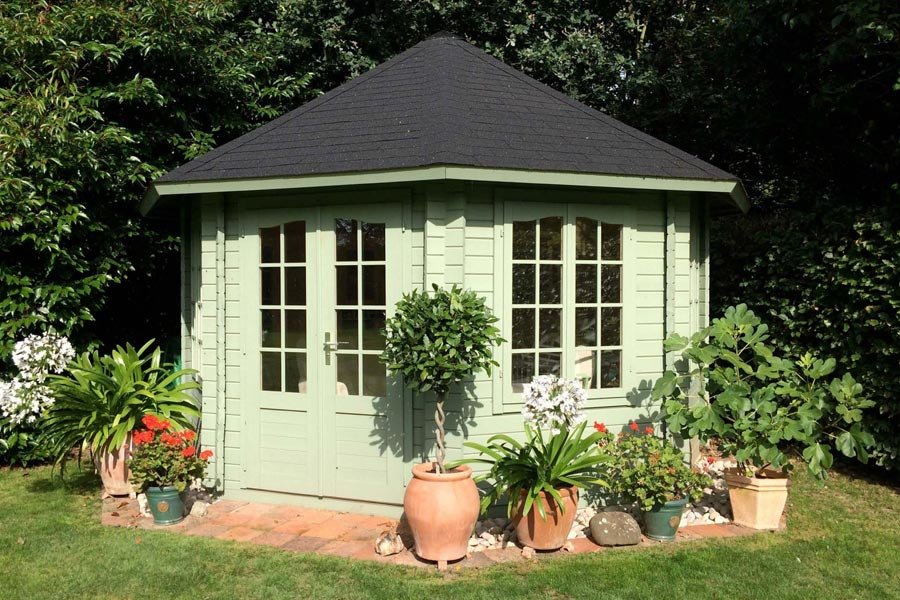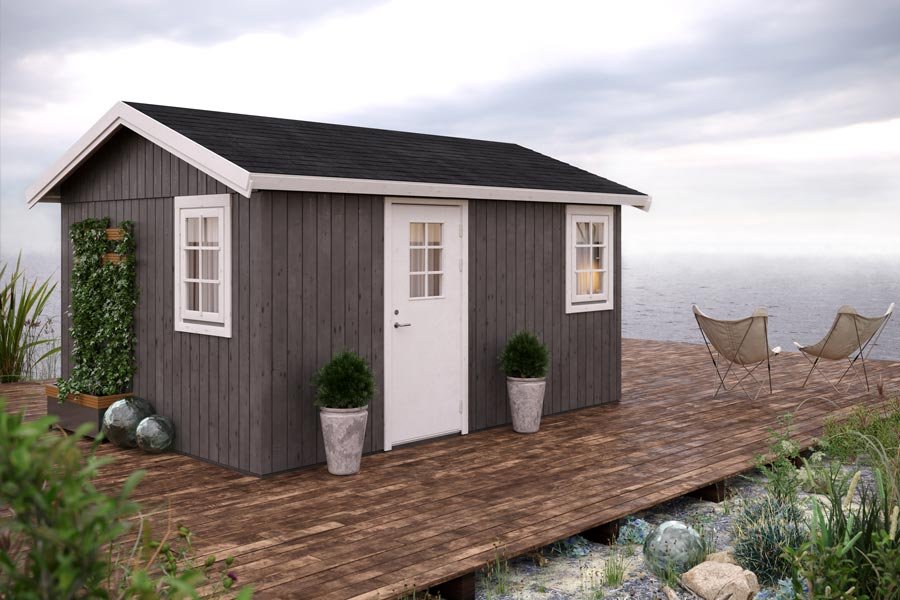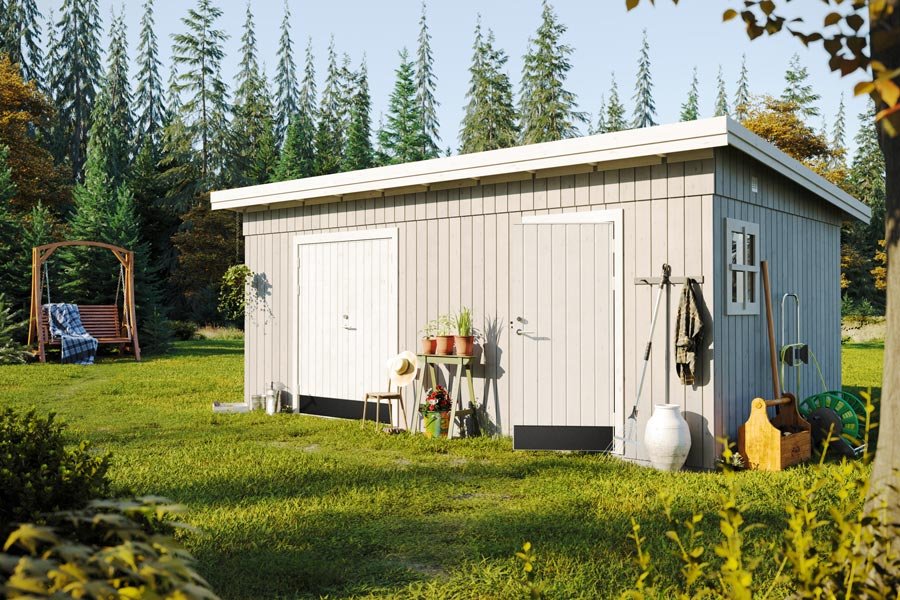
With many of our customers, we find that buying a summer house or garden room is part of a wider garden design overhaul. And the ideal complement for a new garden building is often a pond – perhaps in another part of the garden, or possibly built into a decking area or on a patio by the summer house.
After all, if you’re planning to spend more time in your garden, a pond can make your garden view more interesting and varied. And it can attract a huge variety of wildlife – from hedgehogs to dragonflies to frogs and newts, which as well as giving you something to look at, can also help to control slugs and snails.
A fountain or waterfall, either connected to the mains or a solar panel, can also add another dimension to your pond. Sitting on the decking outside your summer house can be very relaxing; add the calming sound of running water to the mix and you’ll be in heaven.
Making a garden pond is no longer the DIY project from hell

Go back a few years (or decades) and building a garden pond could be the DIY project from hell. I’m sure some of you have a few childhood memories of the bad old days of trying to build concrete or clay-lined ponds in the back garden.
Fast forward to today, and these projects are far easier, with a huge choice of liners, both molded and flexible. Possible materials include fibre glass, PVC, butyl and EPDM; they all ensure that making a garden pond is a lot easier than it used to be.
The affordability and range of mini-diggers also allows for a large pond to be dug in even an average sized back garden (or one with ground too difficult to excavate by hand). A summer house with decking overhanging a large landscaped pond is no longer the complex and expensive task it once was.
Choosing the best garden pond liner

The advantage of molded or preformed pond liners is that they don’t puncture or tear, but they don’t allow you much flexibility in the design (typically rounded triangles, rectangles or squares with two different depths). In contrast, PVC, butyl and EPDM liners are cheaper, and used much more frequently, but are more susceptible to leaks (a good layer of sand, or even carpet underlay, is recommended under such pond linings).
There’s also a material called Bentomat, which is ‘self-mending’ and made from natural materials. It’s easy to install and is often used for large-scale constructions such as canals or fisheries, but can also be used at home to make a small garden pond.
If you’re not sure which pond liner to go for there’s a good summary on the Telegraph Lifestyle site, and a very interesting blog post on LochNessWaterGardens.com about ponds and water gardens, covering subjects from liners to koi to pond predators.
The best location to make a garden pond?
As well as researching pond liners, you’ll need to think about where you position your pond. You’ll probably want to have it somewhere you can see it – either from your house, or from your new summer house. Partial shade is recommended, since too much sunlight can encourage algae growth. But water plants will also need sun for part of the day, so avoid all-day shade.
Having trees overhanging the pond is not ideal, as you’ll have to spend time removing dead from the leaves. Tree roots could also end up puncturing your lining.
It’s a good idea to avoid building the pond in a spot that is boggy or marshy. You wouldn’t think this would matter, but having a high water table underneath the pond can cause damage to the liner when the water level rises.
There are good tips to get you started on a simple rectangular liner pond with a decking surround on the Gardeners World website. If you want more nuanced ideas on shape, position and designing a pond, take a look at World of Water.
On a much simpler scale, the Royal Horticultural Society website has some good ideas for container water gardens, using old baths or wooden barrels.
Sunken ponds versus raised ponds

One solution for areas where digging isn’t possible, or the water table too is high, is to have a raised (or partially raised) pond. You won’t get rising water (or roots) damaging your liner, and raised ponds can often be safer for children and animals than sunken ponds.
A further benefit of raised ponds is that, with less digging and excavations to do, they can be easier to build (for instance, making a garden pond out of timber is a lot less backbreaking than excavating heavy clay soil). They can stand on pretty much any sturdy surface, as long as it is stable and can bear the weight of the water, such as concrete, paving, earth or decking.
There are various options for constructing a raised pond, including stone or concrete sides (such as you would see in a formal garden) or a timber frame.
Attracting wildlife to your garden pond

Finally, if you plan to watch your own garden wildlife show from your new summer house, you’ll need a wildlife-friendly pond. For example, it’s vital to think about how small animals or amphibians will get in and out of it. Clearly, raised ponds are less mammal-friendly; and so are ponds with steep sides, where animals will struggle to get out.
Instead, you’ll need gently sloping sides, and perhaps a beach or ramp made out of stones or pebbles. You’ll also need a range of plants that are wildlife-attracting and can help oxygenate the water (particularly if you want to keep fish, and like clear rather than murky water). If you get the right mix of plants you can attract frogs, toads, newts and dragonflies, and other creatures such as birds and hedgehogs may well use the pond to drink.

Once constructed and planted, your garden pond will soon improve the look of your garden. It will give nature a helping hand, offer a beautiful view from overlooking windows or the summer house, and when combined with a fountain or some subtle underwater lighting, a relaxing addition to the patio, border or decking.
















